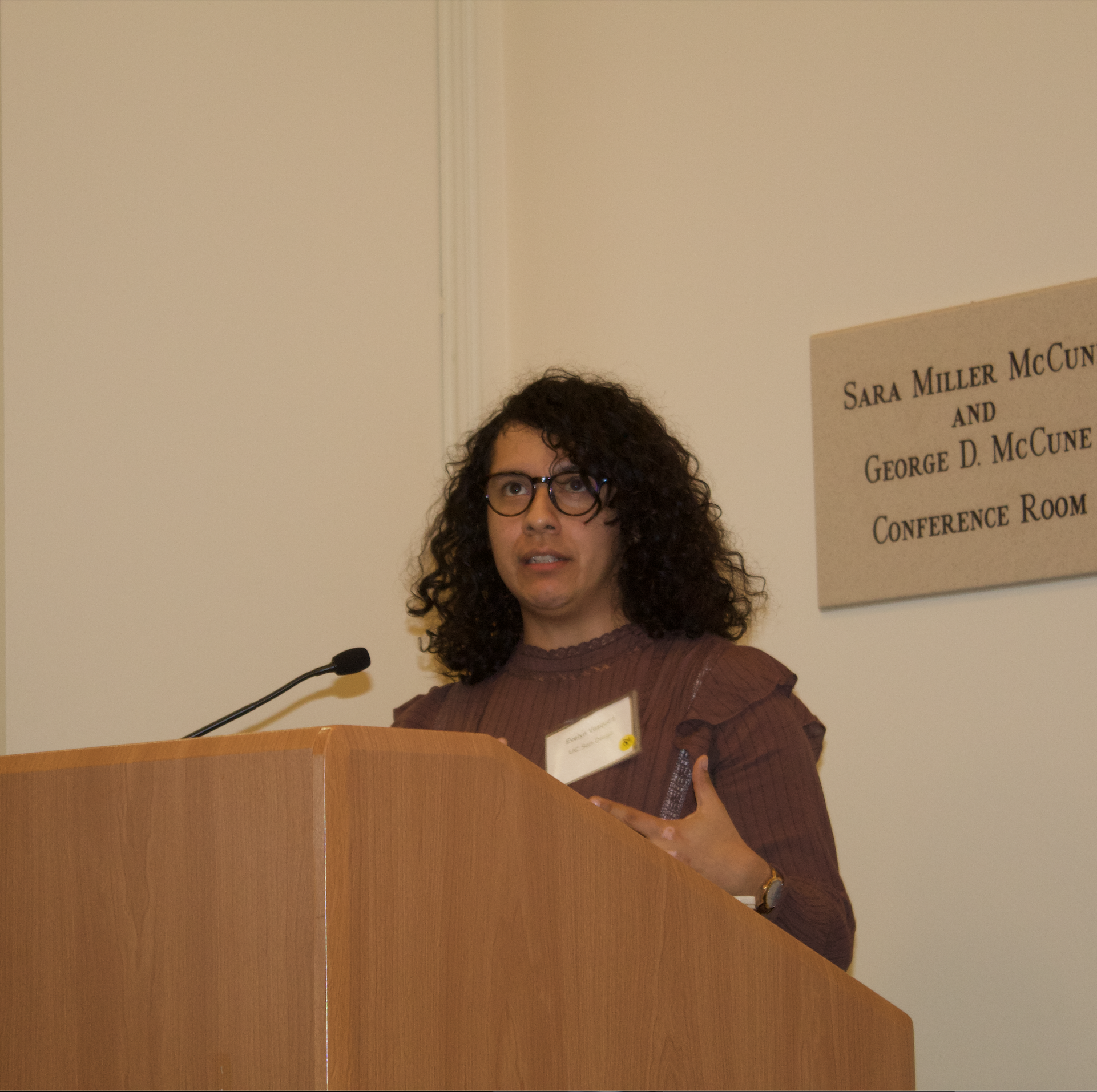By Calvin Bruhns
Ohio State University professor Frederick Luis Aldama (left) with event organizers Maite Urcaregui (middle) and Lale Stefkova (right) at the Drawing Diversity symposium.
Comic artists attract a young audience by tackling issues of identity and power as they take on race, nationality, gender, sexuality, and other political hot buttons, said experts at a recent UC Santa Barbara symposium.
“Students reach higher levels of literature analysis with comics than with traditional textual media,” said Jordan Tudisco, who is doing their PhD in Comparative Literature at UCSB. “In comics, what is not seen is as starkly revealing as what is seen.”
Tudisco was one of a host of researchers who spoke at the day-long event Drawing Diversity: Identity, Organizing, and Imagining in Comics and Graphic Narratives, sponsored by the Interdisciplinary Humanities Center, the Department of Spanish and Portuguese and the Department of English, among other UCSB departments.
Speaker Jordan Tudisco presenting on their discussion “Visual Pedagogy: Teaching Trauma through Comics and Visual Narratives.”
Tudisco presented their work on how images translate memory in a session titled “Visual Pedagogy: Teaching Trauma Through Comics and Visual Narratives.” Visuals, Tudisco says, are more effective than traditional forms. “The multimedia elements that govern most comics literally help make visible … aspects of the world that can often be difficult to discern through other political texts alone.”
Fredrick Luis Aldama of Ohio State University gave the keynote address, titled “I Is Another: The Ethnoracial Pause & Building of Storyworlds of Color,” to kick the symposium into full swing. Aldama directs the Latinx Space for Enrichment and Research at Ohio State.
Other participants included Sage Gerson, a PhD candidate in the English department here at UCSB. In her presentation, which was co-presented with independent scholar Brendan Leonard, Gerson spoke about the use of imprisoned convicts as firefighters by discussing Brian Fies’ graphic novel memoir A Fire Story about the 2017 California fires.
Speaker Sage Gerson addressing the audience during a Q&A following her presentation with fellow speaker Brendan Leonard, “Out of Narrative Sight, Out of Mind: A Cultural Commentary on Indifference to Incarcerated Labor in the Graphic Narrative A Fire Story.”
Written by an author whose family life was turned upside down and personally affected by the fires, A Fire Story finds Fies focusing on property loss, home ownership, and the traditional family during such crises, yet ignores systemic factors such as climate change, she said, and “graphically invisibilizes races and marginalizes incarcerated firefighters.”
Evelyn Vasquez, a PhD student at UC San Diego, presented her essay “The Photographer: Restructuring Interactive Narratives in Photos, Text, and Illustrations,” in which she explored the medium of graphic novels through the popular nonfiction graphic novel The Photographer by Emmanuel Guibert, Didier Lefèvre, and Frédéric Lemercier. The graphic novel covers a three-month trip into Afghanistan, with graphic reimaginings of actual photos taken by Didier Lefèvre during his journey to document the voyage, which was at the height of the Soviet-Afghan war. Vasquez implored the audience to think about the ethics regarding photography communities, because “The Photographer juxtaposes imagined landscapes and characters with real places and people, while recounting a warranted and purposeful story.”
Speaker Evelyn Vasquez presenting her discussion “The Photographer: Restructuring Interactive Narratives in Photos, Text, and Illustrations.”
Calvin Bruhns is a fourth year Film and Media Studies Major. He is a Web and Social Media Intern for the Division of Humanities and Fine Arts.





